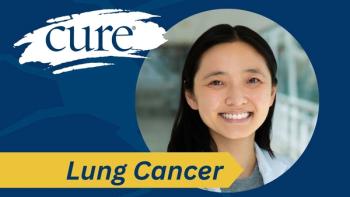
Keytruda, Chemo Show Early-Stage Breast Cancer Event-Free Survival Benefits
Presurgical Keytruda Plus Chemo, Postsurgical Keytruda Continued to Show Benefits in in patients with high-risk, early-stage triple-negative breast cancer.
Patients with high-risk, early-stage triple-negative breast cancer (TNBC) continued to experience clinically meaningful improvements in event-free survival (EFS; the time a patient lives without complications from disease) when treated with neoadjuvant (administered before surgery) Keytruda (pembrolizumab) combined with chemotherapy followed by adjuvant (given after the main treatment) Keytruda compared with placebo plus chemotherapy, according to five-year data from the phase 3 KEYNOTE-522 trial presented during the
At a median follow-up of 63.1 months, the 5-year EFS rate was 81.3% with neoadjuvant Keytruda/chemotherapy followed by adjuvant Keytruda compared with 72.3% in those who received placebo/chemotherapy plus placebo.
“These results overall provide further support for (Keytruda) plus platinum-containing neoadjuvant chemotherapy followed by adjuvant (Keytruda) after surgery as a standard-of-care for patients with high-risk, early-stage triple-negative breast cancer,” lead study author Dr. Peter Schmid, professor, cancer medicine, centre lead, centre of experimental cancer medicine, director, Barts Breast Cancer Centre, said in an oral presentation during the meeting.
To be eligible for enrollment in the prospective, randomized, placebo-controlled, phase 3 KEYNOTE-522 trial, patients had to be at least 18 years of age with newly diagnosed TNBC that was either T1c N1-N2 or T2-T4 N0-N2. An ECOG performance status of 0 or 1 (meaning they could perform daily tasks with little or no help) was also required, as well as a tissue sample for PD-L1 assessment.
Patients were randomized 2:1 to receive neoadjuvant Keytruda at 200 mg every three weeks plus carboplatin and paclitaxel for cycles 1 to 4 for 12 weeks followed by doxorubicin/epirubicin plus cyclophosphamide for cycles 5 to 8 for 12 weeks, or the chemotherapy regimens plus placebo. Following surgery, patients then either received Keytruda at 200 mg every 3 weeks for cycles 1 to 9 for 27 weeks or placebo.
The neoadjuvant phase was defined as starting from the first neoadjuvant treatment and ending following definitive surgery and included posttreatment; the adjuvant phase of the study was defined as starting from the first adjuvant treatment and includes radiation treatment as indicated and also posttreatment.
At the first interim analysis, neoadjuvant Keytruda and chemotherapy had demonstrated a statistically significant and clinically meaningful increase in pathologic complete response (pCR; the disappearance of cancer) of 13.6% compared with placebo/chemotherapy. At the second interim analysis, which had a median follow-up of 39.1 months, the neoadjuvant Keytruda regimen followed by adjuvant Keytruda led to a clinically meaningful and statistically significant improvement in EFS versus placebo. The three-year EFS rates were 84.5% and 76.8%, respectively.
These interim KEYNOTE-522 findings served as the basis for the July 2021 FDA approval of this combination regimen in this patient population.
At the meeting, Schmid shared additional data that looked at subgroups within the KEYNOTE-522 trial with longer follow-up. In patients with stage 2 disease, the five-year EFS rates were 85.6% and 77.5% in the Keytruda and placebo arms, respectively. In those with stage 3 disease, these rates were 68.2% and 57.1%.
When evaluated by baseline clinical nodal status, patients with negative nodes who received the Keytruda regimen experienced a five-year EFS rate of 86.3% versus 77.8% in those who received the placebo regimen. In patients with positive nodes, these rates were 76.8% and 67%, respectively.
In patients with baseline T2N0 disease, the five-year EFS rates were 87.8% versus 77.9% in patients who received Keytruda/chemotherapy followed by Keytruda versus placebo/chemotherapy followed by placebo, respectively.
Investigators also evaluated EFS by baseline disease stage in patients with and without a pCR. In patients with stage 2 disease and a pCR, the five-year EFS rates were 94.2% and 89.8% in the Keytruda and placebo arms, respectively; these rates were 69.2% and 59.1%, respectively, in patients without a pCR. For those with stage 3 disease who had a pCR, the five-year EFS rates were 85.1% and 81.4% with Keytruda and placebo, respectively. In those without a pCR, these rates were 46.8% and 38.2%, respectively.
The EFS benefit with Keytruda was upheld with the longer follow-up across other study subgroup and sensitivity analyses, including PD-L1 combined positive score, menopausal status, HER2 status, lactate dehydrogenase levels, inclusion for new anticancer treatment for metastatic disease, excluding positive margin at last surgery, excluding positive margin at last surgery and second primary malignancy and including second primary breast cancer.
Finally, investigators explored distant recurrence rates as a first EFS event by pCR. In patients who had a pCR, the distant recurrence rates were 4.4% and 6.5% in the Keytruda (22 patients) and placebo (14 patients) arms, respectively; in those without a pCR who received Keytruda (50 patients) or placebo (41 patients), these rates were 17.3% and 23.7%, respectively.
“The incidence of brain metastases as a first EFS event was low in both treatment groups, with a numerically lower incidence in the (Keytruda) group with 2.3% compared with the placebo group at 3.3%,” Schmid said in his conclusion.
Because this was event-driven analysis, Schmid added that the overall survival (OS; how long a patient lives, regardless of disease status) follow-up is still ongoing as the OS events have not yet occurred and that biomarker findings from KEYNOTE-522 will be presented in 2024.
For more news on cancer updates, research and education, don’t forget to




